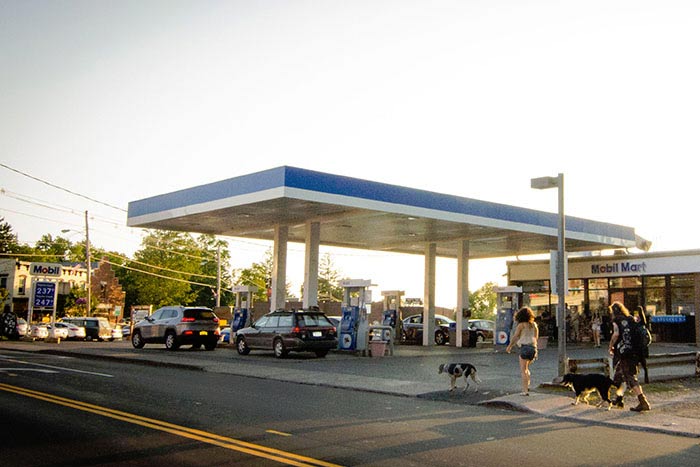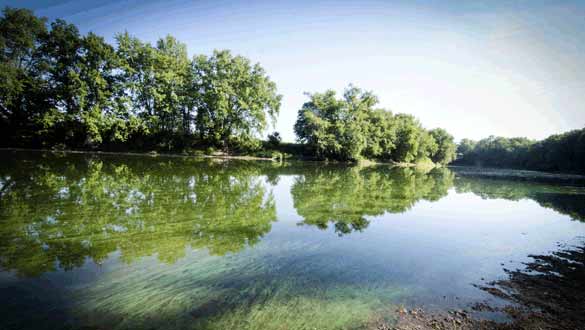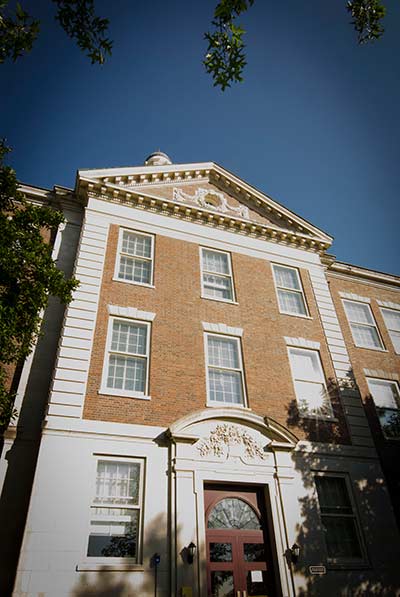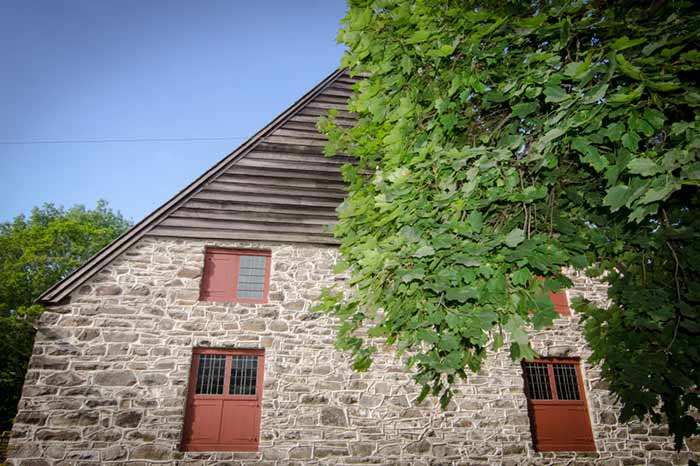
(Photos by Julie O’Connor)
When I was a single-digit, striped-shirted, curly-headed kid playing the sportsball out on Prospect Street in New Paltz until the summer sun handed the day over to the village streetlights and the beaconing glow of primetime TV, I learned some cool facts from my older peers: that when a man kisses a woman, a bubble forms in the woman’s mouth and she swallows it and it becomes a baby in her belly; that Lew Alcindor had changed his name to Abdul Doob Jabber and that some folks weren’t thrilled about it; and that New York City was going to splinter off into its own state and New Paltz was going to – was going to have to – become the new New York City.
It made perfect sense to me, via I-forget-which Piagetian myopic centrism of preadolescence. New York City was the Big Place with the Yankees and Death. I had seen it a few times, but only a few. My father didn’t like it, or at least hated driving to it, hugging a one-road route that I now recognize as fabulously misguided, making me believe that it took two-and-a-half stress-saturated hours to get to places in Manhattan that I now make in a buck-20 in light traffic.
New York was the real world, and probably not for me; New Paltz was my Macondo. Made more of imagination than of pressing reality, more ether than carbon, it was the undisputed second-most-important place. And while I am a man with a complex, vacillative ego, I’ve always solidly known the highest that I could rise, the best that I could hope for: second-best, vice-best. A noble goal, all thanks be to New Paltz.

What are the offices and burdens of the man who stays home? Well, you are likely tasked with shepherding your parents on their journey: a terrible honor and more meaning and truth than anyone should want from life. Also, you are the vessel and archivist of other people’s memories. It is part of your function. The landscape virtually screams your self back at you as you move through your days, your story encoded in its contours and textures: a mossy stone wall, graffiti carved on a seesaw, a bend in a north-flowing river, the secret history of five benches and three girls. For this burden, you are rewarded with some Faulkner-mind (or García Marquez); a view of history and the long streams that make a self; a knowledge that can only come from the obsessive micro; a whole family of truth casually declined by those who move away because it is “what you do” in “these modern times.”
When they come to visit their elders, these half-rootless leavers will perceive you as something quaint and anachronistic: an Old World eccentric, a small wit drilling a deep and narrow and completely useless hole, lacking the broad imagination and efficacious daring of American dreams and bigger holes. I don’t disagree.

Years after my first, longest stint as a writing teacher and computer lab director at SUNY-New Paltz, I learned that one group of students – upon discovering that I was from New Paltz, had gone K through 8 to the university’s Campus School, was the son of a SUNY professor who shared my name and had gotten my Masters in the very department in which I now taught in – had assigned me a nickname, and it had stuck: They called me “the Experiment.”
Now get this: New Paltz is a small, stupid town with a feverish internal history and a chronic crisis of self-importance. If the national news doesn’t visit every few years for organic reasons, someone will do something to induce it. I am New Paltz and New Paltz is me; but there are many New Paltzes, and do not for a second suppose that mine is the authoritative New Paltz of record. Hardly. When I come upon my Huguenot classmates – the scions of the old NP business- and landowners presiding at long tables in P & G’s like f*cking Hapsburgs – their contempt is palpable and mine right back atcha, their denial of my New Paltz absolute and mine of theirs, too. Know your tour guide. I am the Experiment.
1. Mohonk
My mother must have taken me up to the Mohonk Mountain House once when I was four or younger. I didn’t go back with any regularity until I began working there at the age of 16. Its gardens, trails, ponds, white stone and hewn-log gazebos immediately became a place that I visit happily in dreams, a deep image both of peace and of endless interest and discovery: the paths that just go and go. Note that this is not exactly about the wonder of nature, for if it were, I would have said the Shawangunks, not Mohonk. Mohonk is about nature with the first assays of human civilization and art laid in: groomed nature, gently shaped, the first cut of the awakened spirit, the same attraction held by the Shire or the visions of Lewis Carroll.
2. Apples
Look, Red Delicious just sucks. We all know that now. When I lived for nearly five years in the Moriello orchards, we had Golden Delicious on one side, Granny Smith on another and a huge block of Red Delicious behind the house (the front yard was a pumpkin patch). Even at the height of ripeness, on the very day of peak flavor and in a perfect growing season, Red Delicious sucks. Be thankful for the modern era of Honeycrisp and Pink Ladies. I am thankful to live in apple country, with several orchards right outside the village and a score more in the area. Apple culture is weird like Halloween.
3. The Village Grid
The Village of New Paltz, I have been told, has bad feng shui. Some kind of consultant, melding Western civil engineering methodologies with a shamanistic sensitivity to the meridia of community life and the manifest intentions of nature, diagnosed us as misaligned. Plattekill through North Front, from the college to Pegasus, should have been the main street, the commercial spine descending from the orchard heights to the north-flowing river. The dullard Hugies misread the lay of the land, and we are left with a village with an elliptical warp and wobble, at war with its own essential nature. Thus the furor, the night crazies, the sense of skewed, nonvolitional enchantment that very few villages of this size can generate. Ninety-nine of my 100 weirdest memories involve Main Street after midnight, and I don’t remember the other one. I am surprised how far and wide this little village is known, and always for the same damn thing: nightmare benders. The Fifth Avatar.
4. The Rail Trail
You call it a thing after the thing is gone, leaving just its name. The Rail Trail only became so known after the rails were dug out, the brambles cleared, the gravel raked, the budget approved, the pedestrians following apace. I am old enough to remember the trains whistling through New Paltz. They stopped, and the tracks overgrew with tall grasses and scrub: an unpleasant place to explore and no trail at all. I bought my first nickel bag out on the overgrown grassy tracks just south of the current Water Street Market, from an older classmate who died a few weeks ago and who, I had learned, had gone on to become a dear, caring and widely beloved man who found his grace through a difficult life. Rest in peace, my friend.
It was my first score – not a bag, but a film canister, actually: inert dirt compared to this designer bud that the kids enjoy today; honestly, I am surprised that we could coax a single larf out of that sh*t. I took it home in my winter jacket pocket, high, and circled nervously about my house trying to decide where to put it. I hung up the jacket carefully in the back of my bedroom closet and closed the closet and bedroom doors: a siren call to my mother, for normally I would have thrown the jacket anywhere on the floor. Moments later, as I was eating a sleeve of Saltines and watching TV from a broken recliner, my mother came downstairs, screaming, “Johnny, is this drugs?”
Oh, small-town symmetries: I was 14 when my parents caught me smoking pot in New Paltz, and then, when my own son was 14, he caught me smoking pot in New Paltz.
So, yeah: the rail trail.
5. IBM
Seriously, f*ck IBM. It was never in New Paltz, of course; but it is impossible to overstate its influence on life here. The Beemers were everywhere, 30,000 of them or so, and then quite suddenly they were gone, leaving a few toxic campuses and an economic void that has never been filled. When you wonder why this is a great place but with nothing to do for money, or why we can’t seem to get a music scene up and running despite incredible resources of talent, or anything having to do with the mysteries and paradoxes of MHV culture, don’t forget about IBM. It’s like the missing piece in a Hemingway story. You don’t know it is missing, but it informs everything.
6. The Normal School
By which I mean SUNY-New Paltz, which began as a teachers’ college, which used to be known as a Normal School. Could there be a more ironic name? Now rated as one of the more competitive state schools in the country, once mocked and mythologized as a national capital of hedonism, the Normal School has been a pivotal place in several chapters of my life, and the only reason my family came here to begin with. I have learned that I might have been raised in Princeton, New Jersey instead (woulda eaten me alive), or that we might have stayed in Syracuse (nooooo!), and that there was a chance that we were going to move to New Zealand (imagine that me if you can). But the Normal School gave my dad a nice job offer at the very outset of Rockefeller’s huge investment in the system, and we came. And I stayed. Thanks, Normal School – I guess.
7. All the Generations of SUNY Graduates Who Stayed or Returned and Built Lives and Families Here, Leading to a Wealth of Culture and Creativity and Community Consciousness that We Otherwise Never Would Have Known Thank You.
In New Paltz, you’ll hear people cite a Native American legend that may or may not be historically accurate: Spend three nights by a north-flowing river and you are destined/doomed always to return to the spot. It is not for everyone, here, but the ones who know it know it well.
8. There is no 8.

9. OK, Huguenot Street
Oldest street in America with its original structures intact, they say, and a beautiful place for community ritual, architectural/cultural study and things to do with out-of-town visitors. Granted, Europeans piss in pots that are five times as old, and the good people of Istanbul can’t dig a hole for a mailbox post without unearthing a historical treasure and engaging international interest; but okay, Huguenot Street.
10. The Little Red House of Gifts
Was it even called that? Was it in fact located at present-day Murphy’s on Main Street, just above the Elting Library? Did it exist it all, this small, cloistered and multi-tiered gift store that was to interior space what Mohonk was to the outdoors: a concentrated complexity and micro-universe, all potpourri and things that I would never buy, yet somehow bottomless in its dimensions and dusty corners for discovery, a tiny vortex of pointless fascination like this stupid little half-real village itself?

John Burdick, let me just say I’m a reader (and writer) and I think your writing is great. This New Paltz piece was hugely enjoyable.
I decided to read more of your articles and was rewarded by getting turned on to a great band completely unknown to me; Breakfast For The Boys. So, another benefit accrued.
Thanks! I hope to read much more of your work. (Book?)
Well done, old friend.
I’m from the same generation and I expect my parents knew John’s parents. I left NP in the early 70s and have lived in London ever since, where we have indeed been known to piss in very ancient pots.
This piece is really redolent and conveys the particular weirdness of NP very. Sadly, I haven’t been back since my father died and we cleared out his house…
This is spectacular. I’m one of the graduates who stayed, and I feel I’ve missed a great deal by arriving so late. Thank you for deftly drawing back a veil to reveal a bit more of the New Paltz experience.
get out your tick-kits. Scary are tick bites. Then there are toxic saliva mammals that chew your skin and in it flows and we ain’t talking through our hat here. Big scar for such a small shrew and that’s just the four-legged kind
Brilliantly written. Better than a box of chocolates…or a bouquet of flowers. Thank you…
And it’s my Macondo too. Thanks for this piece; it’s a fittingly quirky reminiscence.
As I read and considered and remembered my own New Paltz upbringing, I winced at your dismissal of old time landowners and business owners. There may have been more humility at that long P&G’s table than in the smoke filled haunts of some of the conceited, womanizing college professors at one time. You might know what I mean.
The rail trail before it was the rail trail was also mythic for me. We accessed it from our backyards and a path that crossed a stream and then bisected it. We played very near it, but rarely chose to go jumping from tie to tie in either direction on account of the bear someone had seen running down it and the kidnappers and college kids (I was equally wary of these) who certainly used the corridor for nefarious purposes. Flattened nickels and pennies in my older brothers’ change jars were evidence of the better past (when actual trains ran) that I had just missed.
You point out well the sentiments of those who have left regarding those who have stayed. There is a horrible smugness here that says we know about the world and we are cultured. It helps some sleep at night, I’m sure, but the truth is closer to what you’ve put out. Those who have stayed live in a cute, warty, self-important micro-culture with huge small-town perks.
there may be a qualitative difference between those ‘native’ paltzonians, and volunteers. burdick’s attractively accounted stick-in-the-mud justifications notwithstanding, one can be a volunteer…since the summer of ’64 at age 17,and still feel like a native son. of the thousands who have since blown through town, few have explored like a kid on a bike, or shopped for the necessaries at the grand union-now post office, or un-necessities at the red house..(bayberry candles as gifts to girlfriends)….or .10 beer at the tav…loup garu, rock and snow …now what?
with no cars on campus, and a student body that mostly went home on weekends, I scoured the environs of empty new paltz on my 10 speed as I did back on my native long island. from the long abandoned train station, the old town dump on plains road, closed wood-turning factories near the rail road tracks, the closed and spookey poor house…..there were many abandoned properties in and around town offering easy entry on quiet afternoons.
the active farms were fascinating,( there were cows, then), as was the wilder life. mohonk, swimming holes at minewaska, apple orchards as far as you could see, replaced with asphalt now. the orchards in bloom offered a deafening white noise of bee-buzz, and the apples and corn were a feast for the wild animals. plenty of interesting road kill for skeleton and pelt harvesting, and general studies biology projects.
few outsiders had the time or inclination to really explore the musculature of the town, its various and present business history, the implied social structure of who owned the land, the behind the scenes of landlords and housing. stay long enough and see the ebb and flow of businesses come and go, you feel a sense of your own growth with the town, the sadness of change and things passing, like old friends.
the campus in those days went from tiny and intimate….almost a club, through a period of endless churning and building….growth to the point of alienation. I lived for some years above a roadhouse outside of town. pitch black at night surrounded by orchards and no streetlights. gradually, the family roadhouse ‘northview house’ became ‘spinelli’s’, became ‘joes’, now surrounded by bright lights, traffic, and commercial buildings. nearly every private home became housing or a business.
moving back to the center of town, above a drug store called bomze and van vlack. it was by now the so-called golden age written about elsewhere in this publication. it was as stated, a boiling cauldron of sex, drugs, and rock’n’roll.
so many ‘creatives’ from this period arriving as teens, stayed and still know each other 50 years later.
many bought businesses. these non-natives have formed a community with traditions, families, and a history that is the rival of the native one. hardly an overlay, but a blend. mostly there is only a vague awareness of differing arrival times.
the generation that actually resented the college and it’s students is mostly gone. we are all ‘townies’ now, as new paltz has become too diverse and cosmopolitan to notice. but burdick and I and a handful of others have seen and kept aware of the parallel growth and evolution of the person and place, internalizing it and owning it for better or worse like an essential second skin. I will always feel that I was born and raised here.
Wow just found this. Nice to see such a literate take on good old New Paltz. Shared.
A great take on NP, came up from Jersey circa 1968 to buy our first home from the Tosti family. (bought cheaply as the owner’s could no longer afford thanks to IBM closing). We were just kids ourselves, young 20’s with three young boys. My husband’s aunt lived in Rosendale for many years and we used to visit her when we were teens. Talk about rose colored glasses! Where are we all now? Well that’s a book in itself. Some of the flower children that were sitting on the streets in the 60’s appear to still be sitting there? I will say the man who bought our house on North Route 32 has preserved it beautifully with an eclectic mix of all things that go zoom! Oh, and my good friend just published her first book, “Confessions of a Bar Brat”. (No, she didn’t pay me to say that).
this is mucus barfbag bargoyle cirrhosis the dead witch walking. it was cool to see my pic in front of mobil, walking my bass. great article. skoll! cheers from las vegas. the weed is great out here- mucus